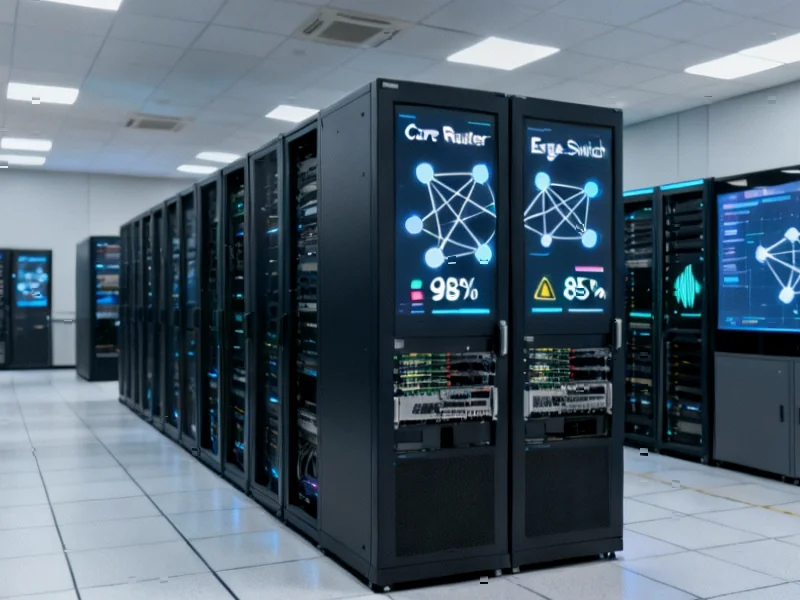According to Ars Technica, OpenAI has signed a seven-year, $38 billion deal to purchase cloud services from Amazon Web Services to power products like ChatGPT and Sora. The agreement gives OpenAI access to hundreds of thousands of Nvidia graphics processors, including GB200 and GB300 AI accelerators, with all planned capacity expected to come online by the end of 2026 and expansion room through 2027. This marks OpenAI’s first major computing deal following last week’s restructuring that reduced Microsoft’s operational control and removed their right of first refusal for compute services. The market reacted immediately, with Amazon shares hitting an all-time high while Microsoft shares briefly dipped following the announcement, highlighting the strategic significance of this partnership shift.
The Compute Arms Race Intensifies
What we’re witnessing is an unprecedented infrastructure arms race that makes previous technology platform wars look trivial by comparison. When OpenAI CEO Sam Altman talks about scaling frontier AI, he’s referring to requirements that dwarf anything the technology industry has previously encountered. The company’s reported plan to eventually add 1 gigawatt of compute capacity weekly—equivalent to bringing a new nuclear power plant online every seven days—represents infrastructure scaling at a pace never before attempted in human history. This isn’t merely about buying more servers; it’s about rethinking global energy distribution, semiconductor manufacturing, and data center construction at planetary scale.
Stakeholder Shakeup: Winners and Losers
The immediate market reaction tells only part of the story. While Amazon’s stock surge reflects investor confidence, the bigger story is how this deal redistributes power across the AI ecosystem. Microsoft, despite remaining a critical partner with its own $250 billion Azure commitment from OpenAI, now faces increased competition for what was previously a captive customer. For enterprise customers, this multi-cloud approach could eventually lead to more competitive pricing and service levels, but in the short term, it may exacerbate the GPU scarcity that’s already constraining AI adoption across industries.
The Financial Reality Check
Beneath the headline numbers lies a concerning financial trajectory that deserves scrutiny. OpenAI’s projected $20 billion annual revenue run rate, while impressive, pales against the company’s staggering $1.4 trillion compute development plan and mounting losses. The circular investment pattern—where cloud providers invest in AI companies that then spend billions on cloud services—creates a financial feedback loop that may obscure true market demand. When a company’s infrastructure spending commitments exceed global GDP figures for many countries, we must question whether this represents sustainable growth or speculative excess. The timing of restructuring moves and reported IPO groundwork suggests OpenAI is positioning itself for public markets before the bill comes due.
Developer and Startup Implications
For the broader AI development community, this deal has mixed implications. On one hand, increased competition between cloud providers could eventually trickle down to better pricing and availability for smaller players. However, in the immediate term, OpenAI’s massive GPU consumption may further strain already tight supply chains, making it even harder for startups and researchers to access the computational resources needed for innovation. The concentration of compute power among a few well-funded players risks creating an AI oligopoly where only the best-capitalized organizations can compete at the frontier model level, potentially stifling the diverse innovation that has characterized AI’s recent growth.
The Strategic Independence Play
This AWS partnership represents more than just infrastructure diversification—it’s a calculated move toward operational independence. By reducing reliance on any single provider, OpenAI gains negotiating leverage and mitigates the risk of platform lock-in. The timing, following last week’s Microsoft partnership restructuring, suggests a carefully orchestrated strategy to maintain multiple options as the company prepares for its next growth phase. However, this multi-vendor approach introduces new complexities in model training consistency, data governance, and operational coordination that could impact product development timelines and reliability.
The Sustainability Elephant in the Room
Perhaps the most underdiscussed aspect of this compute explosion is its environmental impact. When AI companies discuss adding gigawatt-scale capacity weekly, we’re talking about energy demands that rival small countries. The industry has been largely silent about how this power will be sourced sustainably, and whether renewable energy infrastructure can scale at the same pace as AI demand. This isn’t just an environmental concern—it’s a fundamental business constraint that could ultimately limit AI’s growth if not addressed proactively through innovative cooling technologies, energy-efficient chip designs, and strategic data center placement near renewable energy sources.




